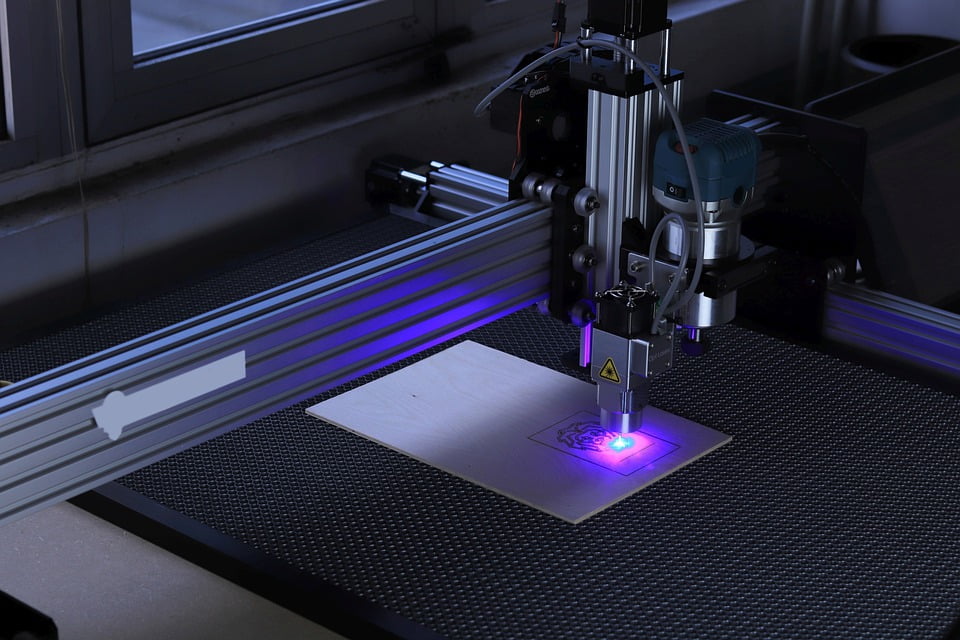In the modern era of industrial automation, the seamless integration of various control and monitoring systems is critical. One of the most effective ways to achieve this is through communication protocols that enable interoperability between devices. Among the most widely used protocols is Modbus, a robust and reliable standard that has withstood the test of time in various industries. A Modbus Gateway with 5 Digital Inputs offers enhanced control and communication capabilities, making it an invaluable addition to many industrial applications. This article explores in detail how such a gateway can significantly improve your system’s efficiency, reliability, and scalability.
Introduction to Modbus Protocol
Before diving into the specifics of a Modbus Gateway with 5 Digital Inputs, it is essential to understand the underlying protocol that powers it—Modbus. Developed in 1979 by Modicon (now part of Schneider Electric), Modbus has become one of the most widely adopted communication protocols in industrial automation. It allows for seamless data exchange between devices like sensors, controllers, and actuators.
Modbus Communication Standards:
- Modbus RTU (Remote Terminal Unit): This is the most common protocol used in serial communication. It transmits binary data and is widely used in simple, real-time communication tasks.
- Modbus TCP/IP: A more modern version that uses Ethernet to communicate. It is ideal for complex systems where multiple devices need to share data over long distances.
Both standards support the integration of multiple devices in a network, making Modbus a versatile protocol for industrial control systems.
What is a Modbus Gateway?
A Modbus Gateway serves as a bridge between Modbus and other communication protocols, enabling devices that use different languages to communicate with each other. In essence, it acts as a translator, converting data from one protocol to another. A Modbus Gateway can manage both Modbus RTU and Modbus TCP/IP protocols, facilitating seamless communication between older serial devices and modern Ethernet-based systems.
The gateway is a crucial component in industrial environments where data from various devices must be monitored and controlled centrally. It provides a means to centralize data collection, streamline operations, and enhance system interoperability.
Understanding Digital Inputs
Before exploring how a Modbus Gateway utilizes digital inputs, it’s important to define what they are. A digital input refers to an input signal that can only have two states: ON (1) or OFF (0). These inputs are typically used for:
- Monitoring switch statuses (e.g., ON/OFF states of devices like pumps, motors, or valves).
- Reading sensor outputs that indicate binary conditions (e.g., the presence or absence of an object).
In a Modbus Gateway, 5 digital inputs mean the system can monitor and process the ON/OFF states of up to five devices or sensors. This capability is valuable in various industrial processes where multiple components need to be monitored simultaneously.
How a Modbus Gateway with 5 Digital Inputs Works
A Modbus Gateway with 5 Digital Inputs operates by collecting input signals from five independent devices. These signals, representing ON/OFF conditions, are transmitted via the Modbus protocol to a central system, typically a Programmable Logic Controller (PLC) or a Human Machine Interface (HMI). The gateway translates the incoming data into the appropriate Modbus format and forwards it to the central system for further processing or action.
Key Components:
- 5 Digital Input Ports: These are physical connections on the gateway where devices or sensors can be connected to transmit their binary states.
- Modbus Protocol Support: The gateway communicates using either Modbus RTU or TCP/IP to transmit data from the digital inputs to the control system.
- Conversion Capabilities: It can convert data from digital inputs into a Modbus-compatible format for seamless transmission.
This setup enables real-time monitoring and control of multiple devices in an industrial environment, improving overall system efficiency.
Key Benefits of Using a Modbus Gateway with 5 Digital Inputs
Improved System Integration
One of the most significant advantages of using a Modbus Gateway with 5 Digital Inputs is its ability to integrate multiple devices into a single network. In industrial systems, various machines often use different communication protocols, which can hinder interoperability. A Modbus Gateway bridges these gaps, allowing devices to communicate seamlessly.
With 5 digital inputs, the gateway can monitor several components at once, such as sensors, switches, or alarms, and integrate their data into a unified control system. This enables centralized management of diverse devices and improves overall system performance.
Enhanced Data Accuracy
In industrial environments, precise data is crucial for maintaining operational efficiency and safety. A Modbus Gateway ensures that data transmitted from digital inputs is accurate and timely. The gateway minimizes the risk of errors or delays that could arise from manual data collection or inefficient communication channels.
By digitizing signals and transmitting them over a reliable Modbus protocol, the system ensures that control decisions are based on accurate, real-time data. This accuracy is particularly important in industries like manufacturing, energy, and water treatment, where even minor discrepancies can lead to costly errors or downtime.
Remote Monitoring and Control
Modern industrial systems often require remote access to monitor and control operations. A Modbus Gateway with 5 digital inputs enables operators to remotely monitor the status of connected devices. Whether it’s checking if a pump is running or determining whether a sensor has been triggered, this remote monitoring capability can significantly improve operational efficiency.
Additionally, remote control allows for quick adjustments or interventions, reducing the need for manual oversight. This capability is especially valuable in large-scale operations, where accessing each device physically would be impractical or time-consuming.
Increased Flexibility and Scalability
As industrial systems grow and evolve, the need for scalable solutions becomes increasingly important. A Modbus Gateway with multiple digital inputs provides the flexibility to expand monitoring capabilities as needed. Whether you need to add more devices or integrate additional protocols, the gateway can easily accommodate changes without requiring a complete overhaul of the system.
Scalability is particularly important in industries that are rapidly adopting Industry 4.0 technologies. The ability to adapt and expand without significant investment in new infrastructure ensures long-term operational flexibility.
Cost Efficiency
By enabling seamless communication between multiple devices, a Modbus Gateway reduces the need for additional hardware, such as separate communication controllers or converters. This not only lowers the initial investment but also reduces ongoing maintenance and operational costs.
Moreover, the ability to monitor multiple devices through a single gateway minimizes downtime, as potential issues can be detected and resolved more quickly. Faster troubleshooting and less reliance on manual interventions lead to significant cost savings over time.
Applications of a Modbus Gateway with 5 Digital Inputs
The versatility of a Modbus Gateway with 5 Digital Inputs makes it suitable for a wide range of applications across different industries. Some of the key applications include:
Manufacturing Automation
In automated manufacturing environments, numerous devices and sensors must communicate to ensure smooth operations. A Modbus Gateway can facilitate communication between machines, conveyors, and other automation components, enabling real-time monitoring and control of production processes.
Energy Management
Energy plants, such as wind farms, solar installations, and power grids, often use Modbus gateways to monitor equipment like transformers, circuit breakers, and inverters. The gateway helps collect data from these devices and integrates it into a central energy management system, optimizing energy consumption and ensuring system stability.
Water and Wastewater Treatment
In water and wastewater treatment facilities, digital inputs are used to monitor levels, pressure, and flow rates. A Modbus Gateway with 5 digital inputs can efficiently transmit this data to a supervisory control system, enabling operators to maintain optimal conditions and ensure regulatory compliance.
Building Automation
In building automation systems, a Modbus Gateway can integrate various subsystems like lighting, HVAC, and security systems. By monitoring the ON/OFF status of these devices, the gateway ensures efficient operation, reduces energy consumption and improves overall building management.
Technical Considerations for Implementing a Modbus Gateway
When implementing a Modbus Gateway with 5 Digital Inputs, several technical factors must be taken into account to ensure optimal performance.
Compatibility
Ensure that the gateway is compatible with your existing devices and communication protocols. Most Modbus gateways support Modbus RTU and Modbus TCP/IP, but it’s essential to confirm that the devices you plan to connect are compatible with these standards.
Installation and Configuration
Proper installation and configuration are critical for the successful operation of a Modbus Gateway. This includes ensuring that the wiring for digital inputs is correctly connected and that the gateway’s settings (such as baud rate, parity, and protocol) are configured to match those of the connected devices.
Security Concerns
As with any networked device, security is an important consideration. A Modbus Gateway that connects to the internet or a large network could be vulnerable to cyberattacks if not properly secured. Implementing firewalls, encryption, and secure communication protocols can help protect your system from unauthorized access.
Future Trends in Modbus Gateway Technology
As technology continues to evolve, Modbus Gateway systems are expected to incorporate more advanced features. Some of the emerging trends include:
IoT Integration
With the rise of the Internet of Things (IoT), Modbus Gateways are expected to play a key role in connecting traditional industrial systems to the internet. This will enable enhanced data analytics, predictive maintenance, and remote operation of industrial equipment.
Cloud Connectivity
Future Modbus Gateways may feature built-in cloud connectivity, allowing data from digital inputs to be directly uploaded to cloud platforms for advanced analytics and monitoring. This trend is expected to enhance the ability to manage and optimize industrial processes in real-time.
Edge Computing Capabilities
Another trend is the integration of edge computing within Modbus Gateways. By enabling data processing at the edge of the network (i.e., closer to the source), these gateways can reduce latency and improve the speed of decision-making in critical applications.
Conclusion
A Modbus Gateway with 5 Digital Inputs is a powerful tool for enhancing system performance in industrial settings. It offers improved system integration, accurate data collection, remote monitoring, flexibility, and cost efficiency. These benefits make it an essential component in industries ranging from manufacturing and energy management to water treatment and building automation.
As industrial systems continue to evolve, the importance of scalable, secure, and interoperable communication solutions like the Modbus Gateway will only increase. Whether you are looking to modernize your existing infrastructure or build a new system from the ground up, a Modbus Gateway with multiple digital inputs can significantly improve your operational efficiency and reduce costs over the long term.






Tech content on this site may include contributed articles and partnerships with industry voices. Learn more in our Editorial Policy.